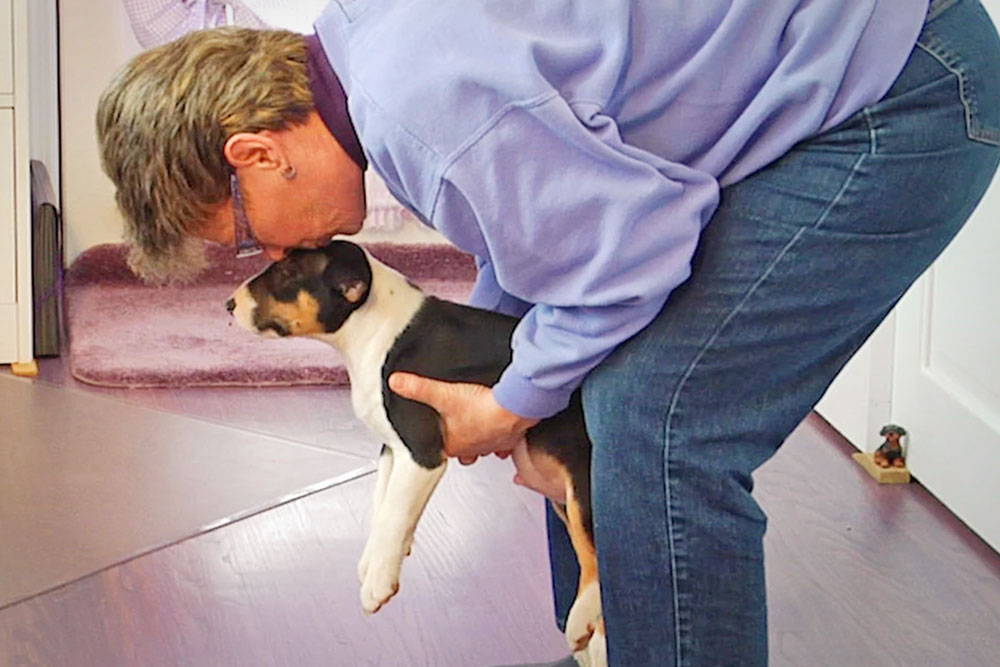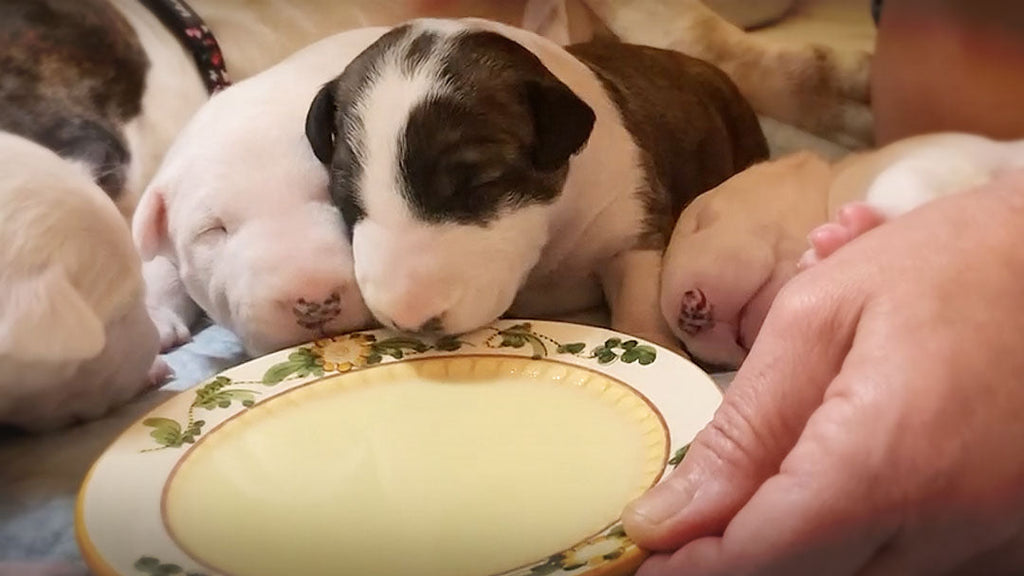What's The Significance of Puppy Testing?
Shifting Your Lens For Better Results

Find a loving puppy tester who'll make the test a positive experience for the puppies. Puppy testing itself can constitute a traumatic event in the hands of a rough or unwise tester. Be ready to step in and stop any test when any puppy looks scared or unhappy.
We talk about puppy assessment tests (PAT) in Puppy Culture, but a couple of studies have come out since the film that bear discussion. They confirm what we state in the film - that puppy testing is useful as a diagnostic, but not as a predictive tool. In a recent and fairly deep study, early temperament tests were found to have little or no ability to predict any adult personality trait with reliability, except for exploratory behavior.
What's so very interesting, though, is that around the same time that the above study came out, another study was published that definitively linked experiences in the first year of life with the outcome of later temperament tests - for instance, a puppy or young dog being attacked or experiencing aggressive behavior from another dog during the first year of life has a strong correlation to later dog AND human aggression.
Empowering Puppy Owners
Breeders might like to shift their emphasis from trying to predict which puppy will do best in which home based on a puppy test, and focus on teaching their puppy owners how to advocate for their puppies and keep them safe. If, for every post and discussion on puppy testing, we had an equal post and discussion on advocating for your puppy in the first year of life, a world of hurt and disappointment could be avoided.

Playdates with hand-selected appropriate playmates are far superior to flooding puppies in an environment where you have no control over the set up. These girls will be friends for life and imprint the positive experiences they had together.
Why Bother With PATs?
Make no mistake, we feel PATs provide very valuable information about our puppies. We're looking at a snapshot in time of these puppies (7 weeks old, in our case) and assessing in what areas we feel those puppies might need additional work before going to their new homes (in our case, at 10 weeks old). So, if we have a puppy with a little more prey drive than we think will be easy for a pet owner to handle, we are going to double down on Attention is the Mother of All Behaviors (using motion as a distraction), and also practice recalls in the face of something moving. If we have a puppy that demonstrates sound sensitivity, we are going to do some extra work on creating pleasant associations with sounds. But the puppy tests factor little or none into our decisions where and how to place puppies.
If, for every post and discussion on puppy testing, we had an equal post and discussion on advocating for your puppy in the first year of life, a world of hurt and disappointment could be avoided.
Plan Of Action
At Puppy Culture, our mantra is “Curated and Controlled.” We advocate quality over quantity in socialization interactions. Remember, the emotional sensitivity that allows a puppy to accept something with as little as one exposure will, in equal (or greater) measure, allow him to imprint a fearful experience with one exposure.

A "Puppy Party" with informed and trusted guests who are familiar with Puppy Culture methods is a great way to expose puppies to good things in a controlled and curated environment.
So, if you’re a breeder, have your puppy owners begin to compile lists of safe people, places, and dogs that they can socialize their puppy with as soon as possible. Have your puppy owners share their list with you, and help them curate a good “playlist” for their puppy. As a breeder, you forget how much wisdom you have and you will be surprised at how much you can help by “editing” your puppy buyers’ proposed socialization plan.
Puppy Testing does not predict adult personality, but experience in the first year of life does. So that tells you where your focus should be.
If you’re a puppy owner, take the initiative and plan out the first two weeks with your puppy so it’s not a haphazard flooding that may go wrong. We hope you have been lucky enough to have a breeder who can mentor you and be a resource but if you don’t, just assess every interaction or outing and always, always, err on the side of caution!

This article was originally updated on puppyculture.com in 2018
For further reading and citations to the studies and findings mentioned in this article:
Stefanie Riemer ,Corsin Müller, Zsófia Virányi, Ludwig Huber, Friederike Range (2014):
The Predictive Value of Early Behavioural Assessments in Pet Dogs – A Longitudinal Study from Neonates to Adults
Available at: www.journals.plos.org
James A. Serpell and Deborah L. Duffy (2016): Aspects of Juvenile and Adolescent Environment Predict Aggression and Fear in 12-Month-Old Guide Dogs
Available at: www.ncbi.nlm.nih.gov

About the Author
Jane Messineo Lindquist (Killion) is the director of "Puppy Culture the Powerful First Twelve Weeks That Can Shape Your Puppies' Future" as well as the author of "When Pigs Fly: Training Success With Impossible Dogs" and founder of Madcap University.
Jane has had Bull Terriers since 1982 and she and her husband, Mark Lindquist, breed Bull Terriers under the Madcap kennel name.
Her interests include dog shows, dog agility, gardening, and any cocktail that involves an infused simple syrup.














